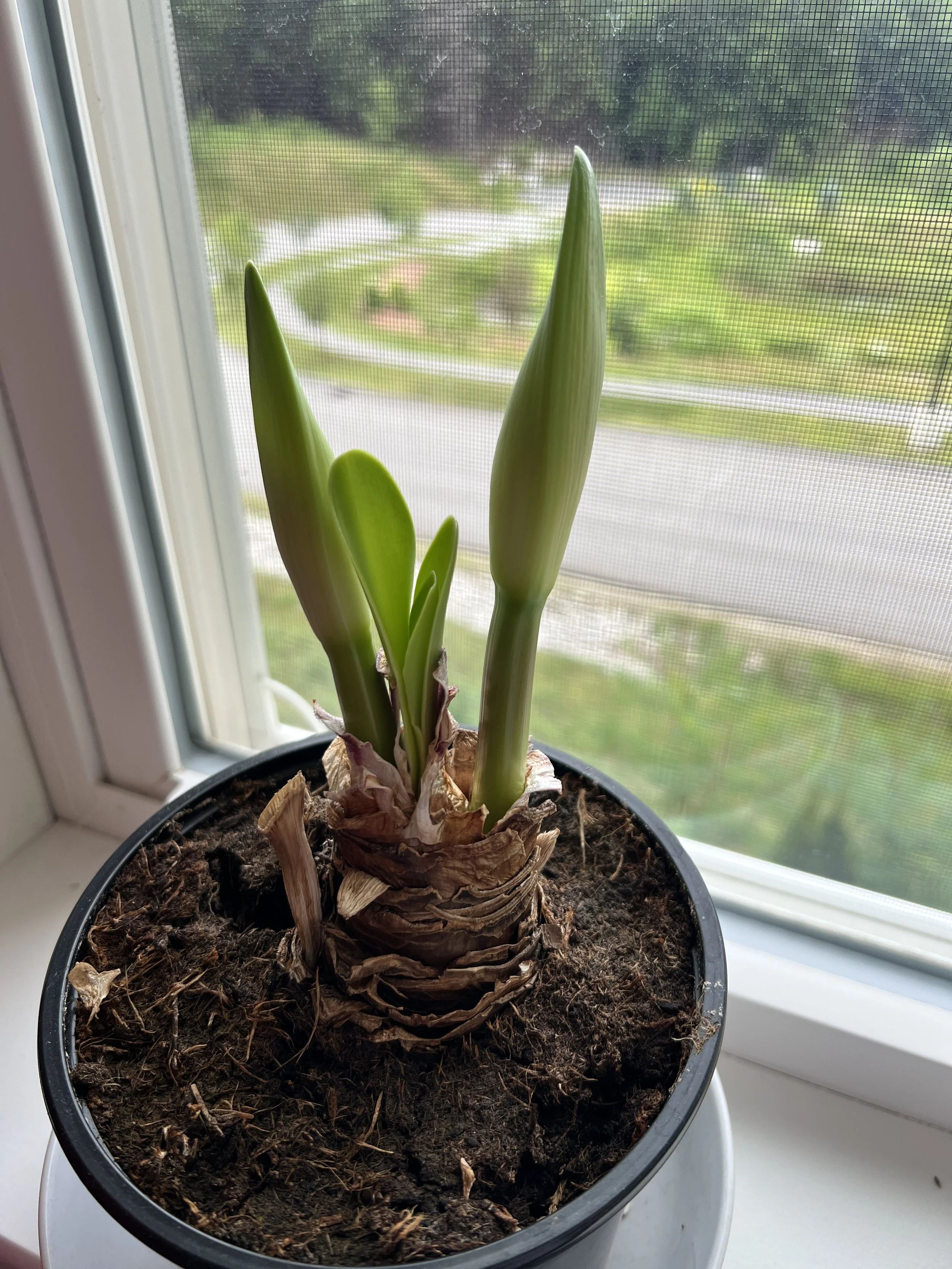Starting to Bloom: What My Amaryllis Plant Has to Say About Growth
For over a year, my amaryllis looked like a dry bulb in dirt. Just a pot on our windowsill. A quiet bulb. No signs. No movement. No bloom.
I had read that amaryllis plants go through a period of hibernation after they bloom—and that they can bloom again (sometimes more than once). So we kept watering. And waiting. A year… and then some.
And this week—finally—it began to stretch. A green tip pushed upward. A whisper of a bloom, then two.
This moment is tender. Beautiful. Worth celebrating.
Not because the flower is fully here—but because it’s on its way.
And that’s exactly what coaching feels like.
In my work as a coach, clients often come to me with an idea, a seed, or even a dry bulb of a notion. They’re not stuck—they’re dormant. Or in between seasons. They sense something beginning to shift inside, even if they don’t yet know the shape it will take.
Coaching creates the space to explore that shift.
To name what’s emerging.
To move forward gently—and powerfully—in your own time.
Coaching doesn’t rush the bloom.
Coaching protects the process.
Coaching partners with possibility.
Whether you’re in a season of stillness, or you’ve just started to feel that first green shoot of change—I see you. Coaching isn’t just for breakthroughs. It’s for beginnings.
Even when beginnings look like a dry, lifeless bulb sitting in dirt.
